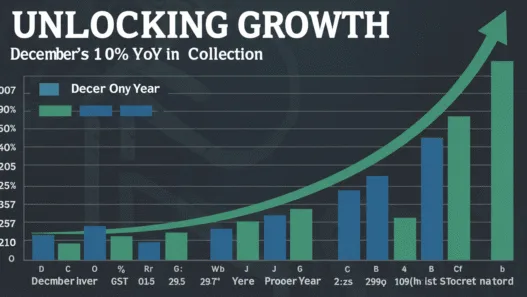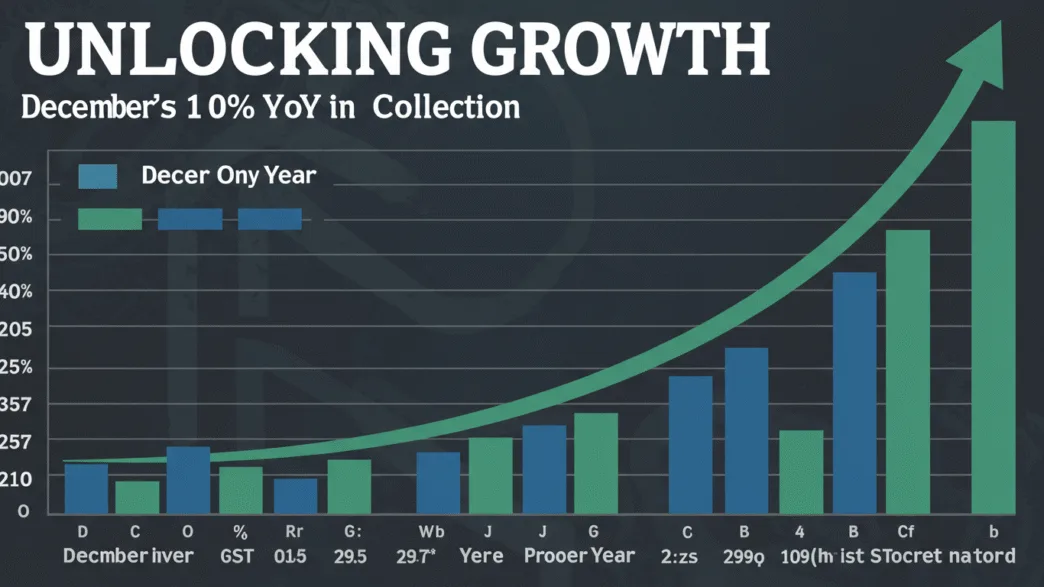India’s Goods and Services Tax (GST) revenues took a dip in December 2023, marking a notable slowdown in its growth trajectory. The figures reveal a crossing of ₹1,64,800 crore, signaling a 10.3% year-on-year increase, a downturn from the 15.1% surge observed in the previous month.
Decoding the Figures
The drop in December’s GST collection, about 1.8% lower than the approximately ₹1.68 lakh crore recorded in November, denotes a shift. It’s worth highlighting that November had seen the third-highest collection since the inception of this tax in July 2017.
Domestic Transactions and Imports
According to the Finance Ministry’s statement, revenues from domestic transactions, including service imports, showed a 13% boost compared to the same period in the preceding year. However, specifics regarding the growth trends in revenues from goods imports remained unspecified, although rough estimates indicate a milder increase at 3.65%.
Year in Review: A Closer Look
Examining the broader picture, the average monthly gross GST collection during the first nine months of 2023-24 stands at ₹1.66 lakh crore, notably higher compared to ₹1.49 lakh crore recorded a year before. Notably, this makes it the seventh month in this fiscal year where collections have exceeded the ₹1.60 lakh crore mark.
Regional Insights: Diverse Trends
Analyzing regional variations, 13 states clocked revenue growth of 13% or more, mirroring the national average growth for domestic revenues. Arunachal Pradesh emerged at the forefront with a 44% increase, followed by Haryana, Goa, the erstwhile State of Jammu and Kashmir, and Tamil Nadu, showcasing notable growth rates ranging between 19% to 22%.
State-level Performance
While several states witnessed a surge in revenue, others experienced slower growth rates. States such as Manipur rebounded from a previous decline, registering a 9% rise in December. However, Sikkim faced a 13% reduction in revenues, while Meghalaya maintained a flat trend. Notably, a dozen states recorded growth rates lower than the national average, indicating diverse economic landscapes across regions.
Expert Insights: Confidence Amid Challenges
Abhishek Jain, partner and national head for indirect tax at KPMG, underlines the significance of consistent GST collections above ₹1.6 lakh crore. He attributes this sustained growth to the festive season buoyancy and the ongoing settlement of dues from 2017-18 and 2018-19.
Government Transactions and Fiscal Picture
Highlighting the government’s actions, it’s revealed that ₹40,057 crore was settled to Central GST and ₹33,652 crore to State GST from the IGST revenues. The Ministry emphasized the total revenue for the Centre and States in December 2023, after regular settlement, stood at ₹70,501 crore for CGST and ₹71,587 crore for SGST.
The dip in GST collections marks a notable point in India’s fiscal landscape, signaling varied economic performances across regions amidst global uncertainties. As the figures depict a nuanced story, these fluctuations in revenue growth highlight the complexity of India’s tax landscape and its resilience in the face of challenges.
In the April-October timeframe, there was a noticeable difference in the growth rates between consumer durables and non-durables. Consumer durables, reflecting consumer sentiment and spending power, experienced a modest 1.4% growth compared to the previous year. In contrast, consumer non-durables, products bought more frequently, showed a more substantial increase with a 7.1% growth rate.
However, it’s important to note that capital goods production and construction goods displayed robust growth in double digits during the initial seven months of the fiscal year. This trend suggests a strong performance in sectors related to capital investments and infrastructure development, indicating potential economic expansion and activity in these areas.
Note: The article is a rephrased version of the original content to align with the given style. No additional facts or information beyond the provided text have been included.














